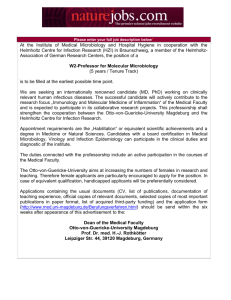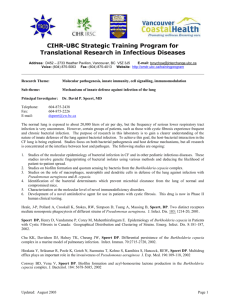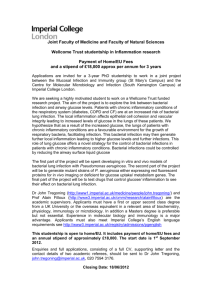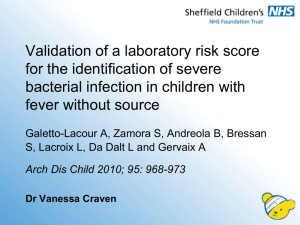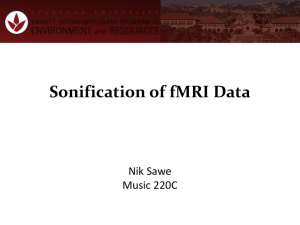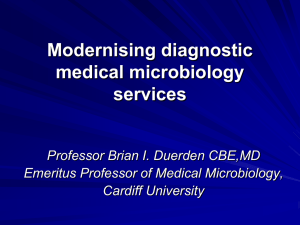diagnosis of bacterial infections due to
advertisement
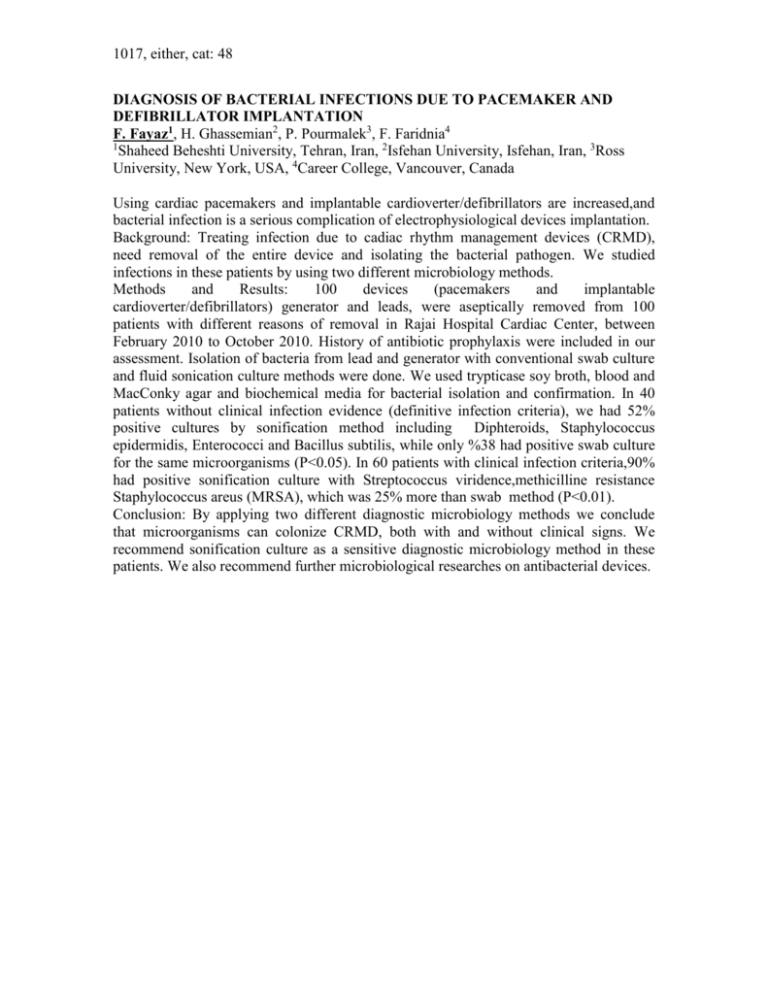
1017, either, cat: 48 DIAGNOSIS OF BACTERIAL INFECTIONS DUE TO PACEMAKER AND DEFIBRILLATOR IMPLANTATION F. Fayaz1, H. Ghassemian2, P. Pourmalek3, F. Faridnia4 1 Shaheed Beheshti University, Tehran, Iran, 2Isfehan University, Isfehan, Iran, 3Ross University, New York, USA, 4Career College, Vancouver, Canada Using cardiac pacemakers and implantable cardioverter/defibrillators are increased,and bacterial infection is a serious complication of electrophysiological devices implantation. Background: Treating infection due to cadiac rhythm management devices (CRMD), need removal of the entire device and isolating the bacterial pathogen. We studied infections in these patients by using two different microbiology methods. Methods and Results: 100 devices (pacemakers and implantable cardioverter/defibrillators) generator and leads, were aseptically removed from 100 patients with different reasons of removal in Rajai Hospital Cardiac Center, between February 2010 to October 2010. History of antibiotic prophylaxis were included in our assessment. Isolation of bacteria from lead and generator with conventional swab culture and fluid sonication culture methods were done. We used trypticase soy broth, blood and MacConky agar and biochemical media for bacterial isolation and confirmation. In 40 patients without clinical infection evidence (definitive infection criteria), we had 52% positive cultures by sonification method including Diphteroids, Staphylococcus epidermidis, Enterococci and Bacillus subtilis, while only %38 had positive swab culture for the same microorganisms (P<0.05). In 60 patients with clinical infection criteria,90% had positive sonification culture with Streptococcus viridence,methicilline resistance Staphylococcus areus (MRSA), which was 25% more than swab method (P<0.01). Conclusion: By applying two different diagnostic microbiology methods we conclude that microorganisms can colonize CRMD, both with and without clinical signs. We recommend sonification culture as a sensitive diagnostic microbiology method in these patients. We also recommend further microbiological researches on antibacterial devices.
